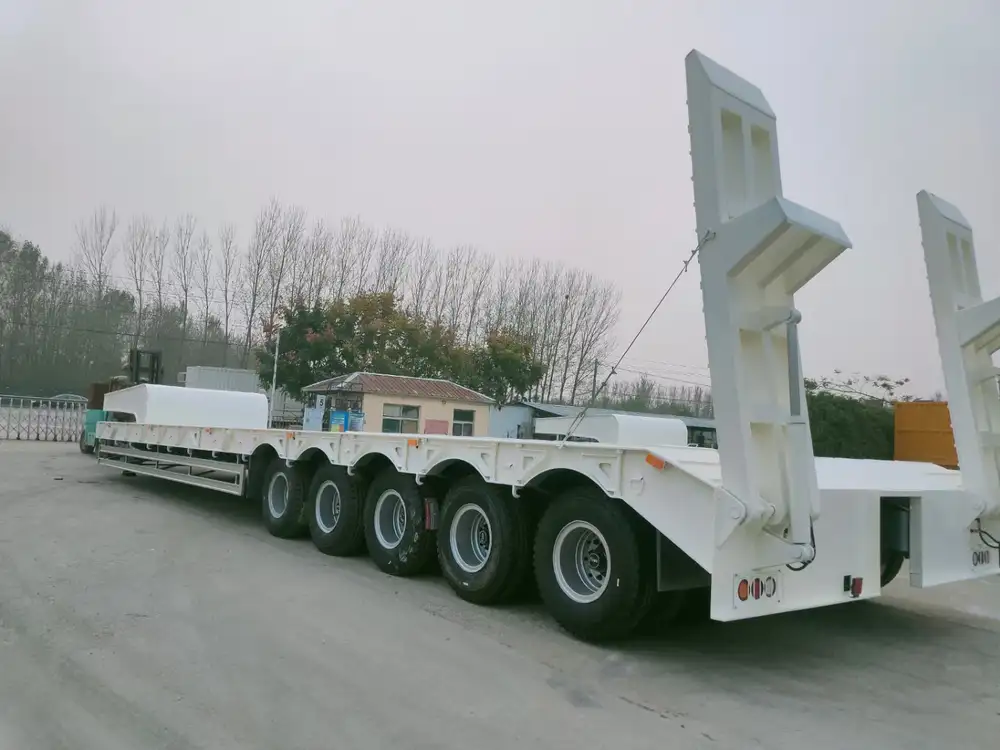When it comes to transporting materials, dump trailers are an indispensable asset. Their versatility and functionality make them popular across various industries. A common query among potential users of these trailers is: How many bushels can a dump trailer hold? Understanding the capacity of dump trailers, including their dimensions and potential uses, is crucial for maximizing efficiency in your hauling tasks.
What Is a Dump Trailer?
A dump trailer, simply put, is a type of truck trailer that is equipped with a hydraulic lift to easily unload materials. These trailers can be towed by trucks and come in various sizes, shapes, and configurations. Their primary purpose is to transport loose materials such as soil, gravel, mulch, and debris from one site to another, making them essential in construction, landscaping, and agricultural industries.
Different Types of Dump Trailers
Before diving into their capacities, it is vital to understand the different types of dump trailers, as these variations significantly influence their holding capacities.
| Type of Dump Trailer | Description | Typical Capacity |
|---|---|---|
| Standard Dump Trailer | Commonly used for general-purpose hauling, features high sides and strong frames. | 6 to 15 cubic yards |
| Low-Profile Dump Trailer | Designed for easier loading and unloading, with a lower height. | 5 to 10 cubic yards |
| Gooseneck Dump Trailer | Enhanced stability and weight distribution, ideal for heavier loads. | 10 to 20 cubic yards |
| Side-Dump Trailer | Allows the trailer to dump materials sideways, enhancing unloading efficiency. | 12 to 30 cubic yards |
| End-Dump Trailer | Designed to unload from the back, commonly used in larger hauls. | 15 to 30 cubic yards |

Factors Affecting Capacity
The capacity of a dump trailer is typically measured in cubic yards. However, translating this to bushels—a more agricultural-oriented measurement—is useful for farmers and those in the grain industry.
To understand how many bushels a dump trailer can hold, we first need to convert cubic yards to bushels. The conversion factor is approximately:
- 1 cubic yard = 27 cubic feet
- 1 bushel = 1.244 cubic feet
Using this information, we can derive the approximate number of bushels a dump trailer can hold based on its cubic yard capacity.
Conversion Calculation Example
For a standard dump trailer with a capacity of 10 cubic yards:
Convert to cubic feet:
( 10 \, \text{cubic yards} \times 27 \, \text{cubic feet/cubic yard} = 270 \, \text{cubic feet} )Convert cubic feet to bushels: ( \frac{270 \, \text{cubic feet}}{1.244 \, \text{cubic feet/bushel}} \approx 217.2 \, \text{bushels} )
Thus, a 10 cubic yard dump trailer can hold approximately 217 bushels.
Typical Capacities for Various Dump Trailers
Let’s break down the bushel capacities for several dump trailer sizes that are commonly used in the field.
| Trailer Type | Cubic Yard Capacity | Bushel Capacity (Approx) |
|---|---|---|
| Low-Profile Dump | 5 | 84 |
| Standard Dump | 10 | 217 |
| Gooseneck Dump | 15 | 325 |
| End-Dump Trailer | 20 | 444 |
| Side-Dump Trailer | 30 | 667 |

Importance of Knowing Capacity
Understanding how many bushels a dump trailer can hold is crucial for a variety of reasons:
Efficiency in Loading: Knowing the trailer capacity allows for the efficient planning of loading procedures. Avoiding overloading can prolong the lifespan of the trailer and prevent accidents.
Cost Management: Planning loads according to trailer capacity helps manage costs effectively. Knowing the precise volume reduces waste and ensures optimal use of transport resources.
Compliance with Regulations: Many areas have legal weight limits for trailers. Properly assessing your trailer capacity can lead to compliant setups that avoid fines or legal issues.
Specific Job Requirements: Construction companies, landscapers, and farmers often require trailers for different purposes. Understanding capacity helps in choosing the appropriate trailer for specific tasks.
Proper Usage Techniques for Dump Trailers
Loading the Trailer
Care must be taken during loading to ensure safety and efficiency:
- Distribute Weight Evenly: Distributing the materials evenly within the trailer prevents tipping.
- Avoid Overloading: Adhere to the manufacturer’s guidelines regarding maximum load limits to reduce the risk of accidents and extend the trailer’s lifespan.

Unloading Strategies
When it comes to unloading, the following practices ensure safety:
- Choose a Stable Location: Unloading on a level surface can minimize the risk of accidents.
- Method of Unloading: Utilize the hydraulic lift properly, ensuring that all personnel are at a safe distance.
Maintenance Tips for Prolonging Lifespan
To enhance the performance and extend the life of dump trailers, consider the following maintenance practices:
- Regular Inspections: Frequently check the hydraulic system, lights, and tires to prevent unexpected breakdowns.
- Clean After Use: Remove debris and clean the trailer after each use to prevent rust and material buildup.
- Lubrication: Regularly lubricate moving parts to prevent corrosion and ensure optimal performance.
Conclusion
In summary, understanding how many bushels a dump trailer can hold is not just about knowing dimensions; it integrates a broader understanding of efficiency, compliance, and job-specific performance. Whether you’re in agriculture, construction, or landscaping, the proper utilization of dump trailers can significantly affect operational effectiveness. Always choose a dump trailer that suits industry needs and be mindful of loading and unloading procedures for maximum efficiency and safety. With these considerations, we empower you to make informed decisions, ensuring your hauling operations run smoothly and efficiently.



